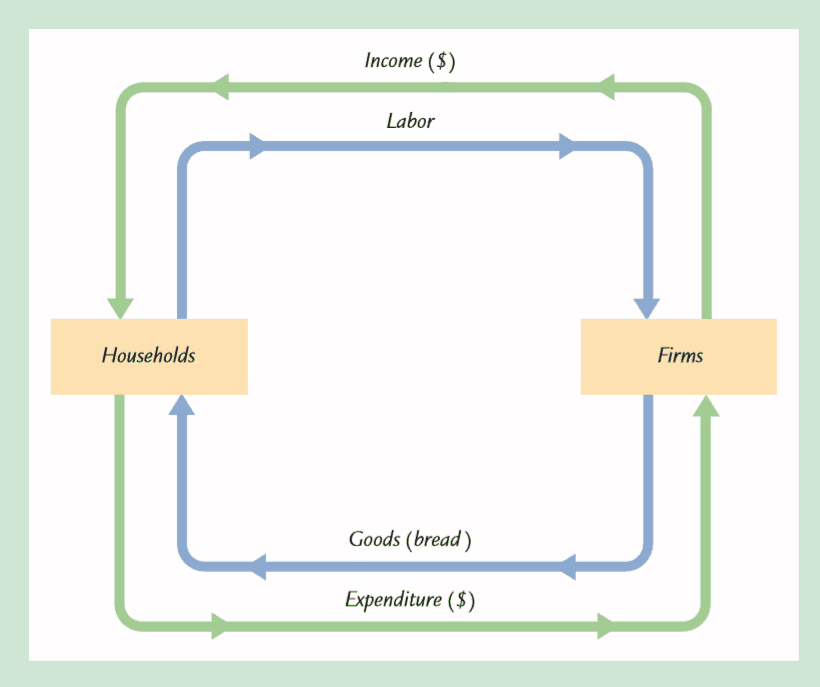In this chapter we will learn about Circular flow of income and expenditures in relation to GDP.
The most important macroeconomic variable is the “Gross domestic product (GDP)”. GDP measures both a nation’s total output of goods and services and its total income
Countries with High level of GDP per person has everything from better childhood nutrition to better education to more Computers per household.
A large GDP does not ensure that all of a nation’s citizens are happy, but it may be the best formula for happiness that macroeconomists have to offer.
In this chapter we will addresses four groups of questions about the sources and uses of a nation’s GDP:
- How much do the firms in the economy produce? What determines a nation’s total income?
- Who gets the income from production? How much goes to compensate workers, and how much goes to compensate owners of capital?
- Who buys the output of the economy? How much do households purchase for consumption, how much do households and firms purchase for investment, and how much does the government buy for public purposes?
- What equilibrates the demand for and supply of goods and services? What ensures that desired spending on consumption, investment, and government purchases equals the level of production?
To answer these questions, we must examine how the various parts of the economy interact.
A good place to start is the circular flow diagram of Income and Expenditure.
The circular flow of Income and Expenditures
Imagine an economy that produces a single good, bread, from a single input, labor.

The image above illustrates all the economic transactions that occur between households and firms in this economy. The inner loop in
The households sell their labor to the firms. The firms use the labor of their workers to produce bread. Which the firms, in turn, sell to the households.
Hence, labor flows from households to firms, and bread flows from firms to households.
The outer loop represents the corresponding flow of dollars. The households buy bread from the firms.
The firms use some of the revenue from these sales to pay the wages of their workers, and the remainder is the profit belonging to the owners of the firms (who themselves are part of the household sector).
Hence, expenditure on bread flows from households to firms, and income in the form of wages and profit flows from firms to households.
GDP measures the flow of dollars in this economy. We can compute it in two ways. GDP is the total income from the production of bread, which equals the sum of wages and profit—the top half of the circular flow of dollars.
GDP is also the total expenditure on purchases of bread, the bottom half of the circular flow of dollars.
To compute GDP, we can look at either the flow of dollars from firms to households or the flow of dollars from households to firms.
These two ways of computing GDP must be equal because the expenditure of buyers on products is, by the rules of accounting, income to the sellers of those products.
Every transaction that affects expenditure must affect income, and every transaction that affects income must affect expenditure.
For example, suppose that a firm produces and sells one more loaf of bread to a household. Clearly, this transaction raises total bread, but it also has an equal effect on total income.
If the firm produces the extra loaf without hiring any more labor (such as by making the production process more efficient), then profit increases.
If the firm produces the extra loaf by hiring more labor, then wages increase. In both cases, expenditure and income increase equally.
